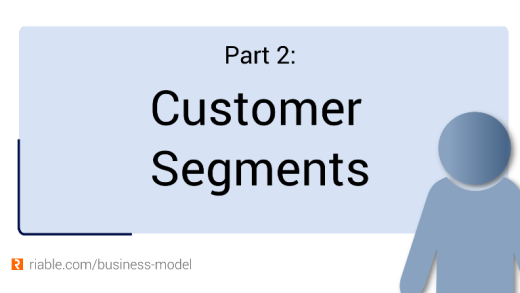Understanding the Business Model Canvas
The Business Model Canvas is one of the most common methods entrepreneurs use to build and develop their startup business ideas, and it can also be used to develop existing companies and organizations. Learn how to understand this model and develop the business model for your startup via joining our free online video course on "Understanding the Business Model".
Unlike the Lean Canvas, The Business Model focuses on identifying a customer, finding the customer's need or pain, and provide a value proposition. It offers a quick way (as opposed to traditional business plans) to conceptualize ideas and implement them by using the following 9 building blocks:

The 9 building blocks of a business model
-
Customer Segments
Understanding who the target customers are and where to find them. Here, it is essential to understand who the ideal customer is, how to appeal to this customer and reach him/her. Learn more about Customer Segments. -
Value Proposition
The value proposition is aimed towards helping customers get jobs done in the best manner possible with the least cost. This value intended is highly linked to the customer, and aims to solve the customer problem/ pain defined in the customer avatar.
The value sometimes refers to the “products and services offered by a company”; but in reality it entails much more details. Learn more about the Value Proposition. -
Channels
“Channels” describe how a business reaches the customer. Here, we consider the various methods were we can reach the customer and deliver the value proposition. Channels differ in their phases (pre, during, or post-sale), and their nature and ownership. Lean more about Channels . -
Customer Relationships
Customer Relationships are all about nurturing the link you have with the customer. Since customers are the focus of the whole business, a business needs to have a good relationship with each segment.
If a business servers multiple customer segments, it should nurture a different relation with each segment, depending on the need and (monetary) value generated by each segment. Learn more about the multiple levels of Customer Relationships. -
Key Resources
Key resources are the back-bone of the business, that provide the infrastructure needed to take action and perform Activities. Such key activities will create a Value Proposition. Resources can be Physical, Intellectual, Human, or Financial. Learn more about Key Resources . - Key Activities
Key activities focus on the main activities that a business does to create the value proposition and operate. Key Activities form the engine that makes the business run.
Key activities can be classified into three categories: Production, Problem Solving, and Platform/ Network. Learn more about Key Activities. -
Key Partners
Partnerships allow businesses grow and access the market faster and quicker that they would otherwise. For various financial, technical, and operational reasons, it makes sense to utilize the power of partners in some sections in the business. Learn more about Key Partners. -
Revenue Streams
Revenue Streams describe how a business generates income. Revenue is a rather broad term, and refers to income that a business generates. Learn more about Revenue Streams. -
Cost Structure
Fixed and Variable costs incurred as a startup is running its operations. Learn more about Cost Structure.
Download the Business Model Canvas Template
You can download the Business Model Canvas as a PDF template from the file below:
Value Proposition Canvas
The Value Proposition Canvas is another important method used in business modeling and development, and is concerned with identifying customer needs, the value proposed to him/her, and how to link them within the Business Model Canvas.

Download the Value Proposition Canvas Template from here.
Lean Canvas
The Lean Canvas is an adaptation from the Business Model canvas tailored for tech-startups and businesses in fast-pace industries that focuses on developing the business idea in a quick and iterative manner that can help entrepreneurs develop as they go.

Download the Lean Canvas Template from here.
After getting the canvas, why not learn how to put it to use?
A full free course on Business Modeling with video
In the Business Model Canvas 101 (Full free course), we will discover how to go about it and design your very own model. This course targets anyone who is new to the concept of Business Modeling design or if they already have an idea and need further guidance. We will get familiarized with the nine main components of a business model, one by one.
Check out our full free course on Business Modeling 101
In case you have missed it: Download the Business Model Canvas Template
Once again, this is the download link for the Business Model Canvas:





